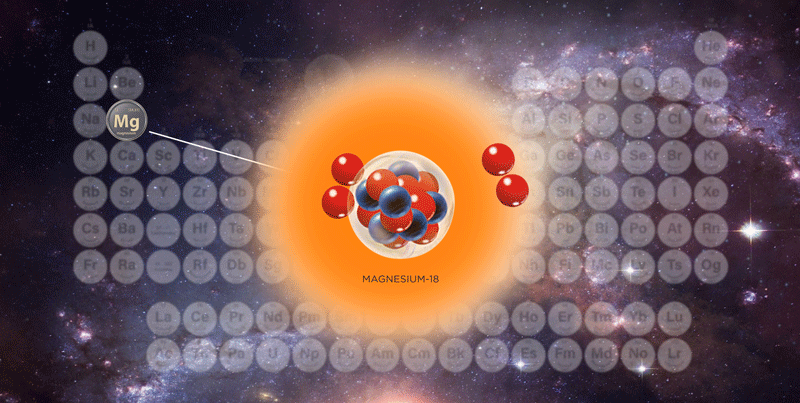Lightest magnesium isotope ever created
An American and Chinese coalition of scientists claim to have created the world’s lightest magnesium isotope.

Magnesium-18 has been forged at the National Superconducting Cyclotron Laboratory (NSCL) at Michigan State University, USA, but it is so unstable that it disintegrates before it is directly observable.
Particle accelerators help explain how nuclei are made and predict extreme cosmic environments.
Assistant Professor Kyle Brown at the Facility for Rare Isotope Beams, Michigan State University, says, ‘By testing these models and making them better and better, we can extrapolate out to how things work where we can’t measure them.’
To create magnesium-18, a beam of magnesium-24 nuclei is fired at half the speed of light into beryllium, and before disintegrating within a tenth of a second is itself fired into another beryllium target.
This second collision creates magnesium-18, but it only has time to exist as a bare nucleus – without a ‘normal’ atom’s electrons – before decaying within sextillionths of a second inside the beryllium.
Because it decays so quickly it cannot be measured, but as it ejects two protons to become neon-16, and two more to become oxygen-14, the protons and oxygen can be detected.
Brown has hopes for more discoveries, ‘And we should be able to create another nucleus that hasn’t been made before.’

